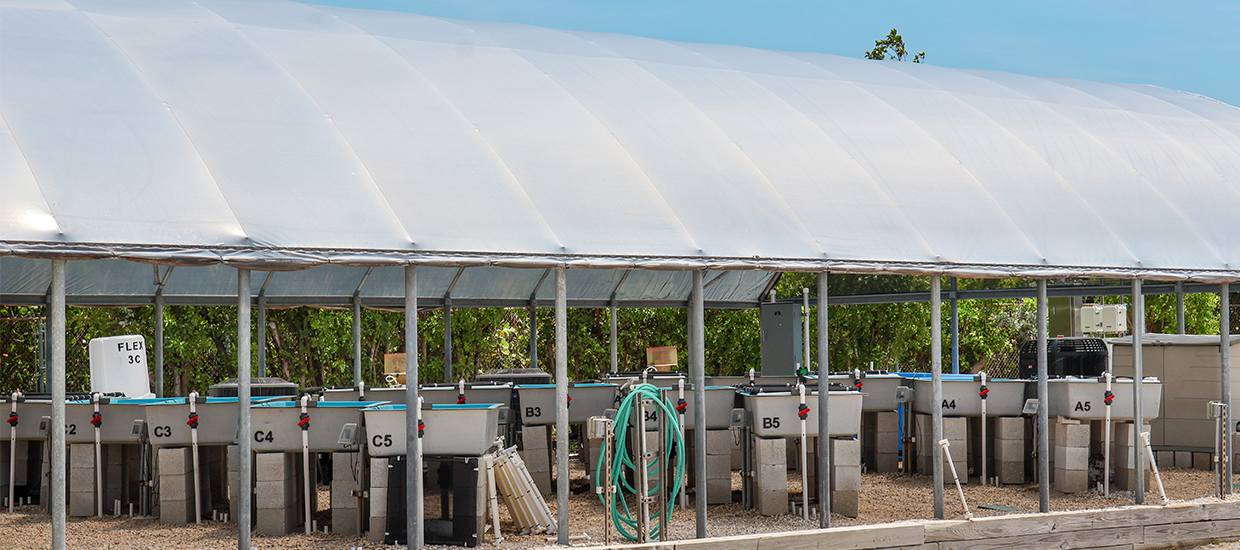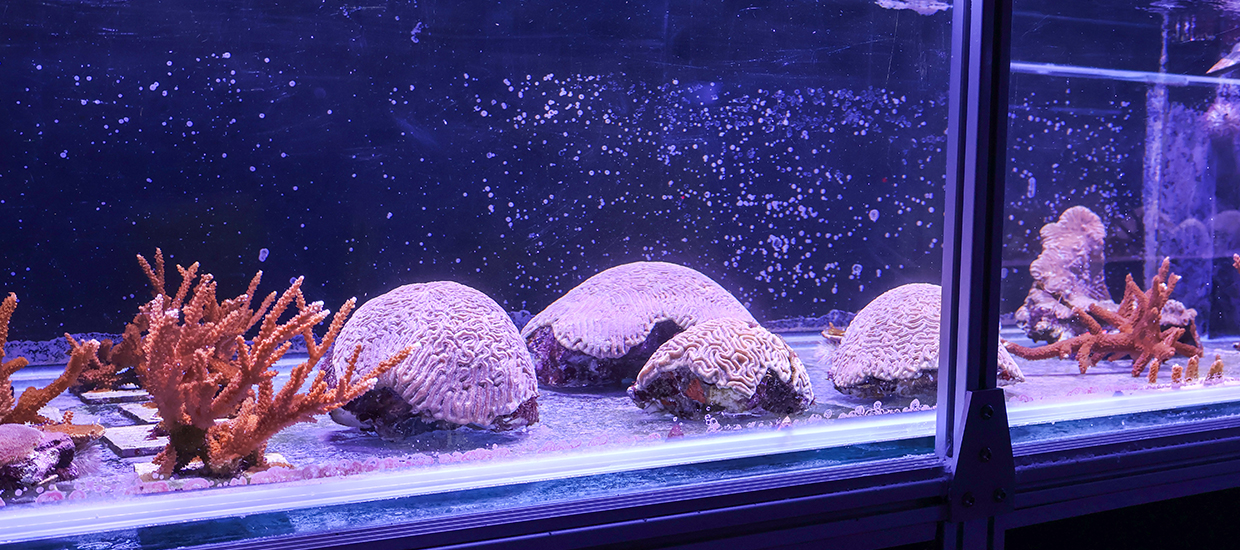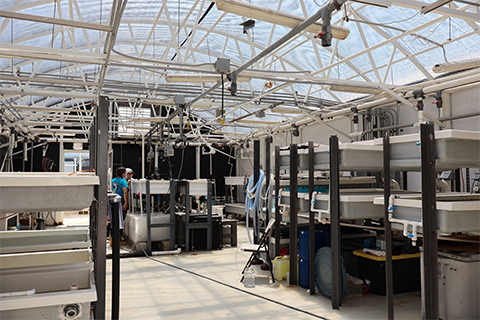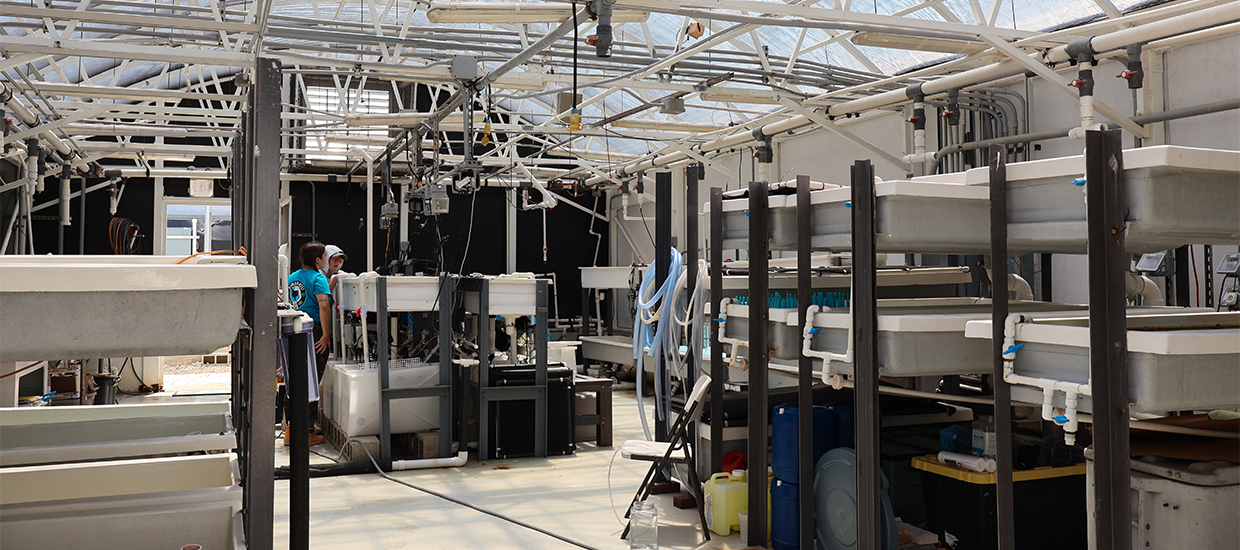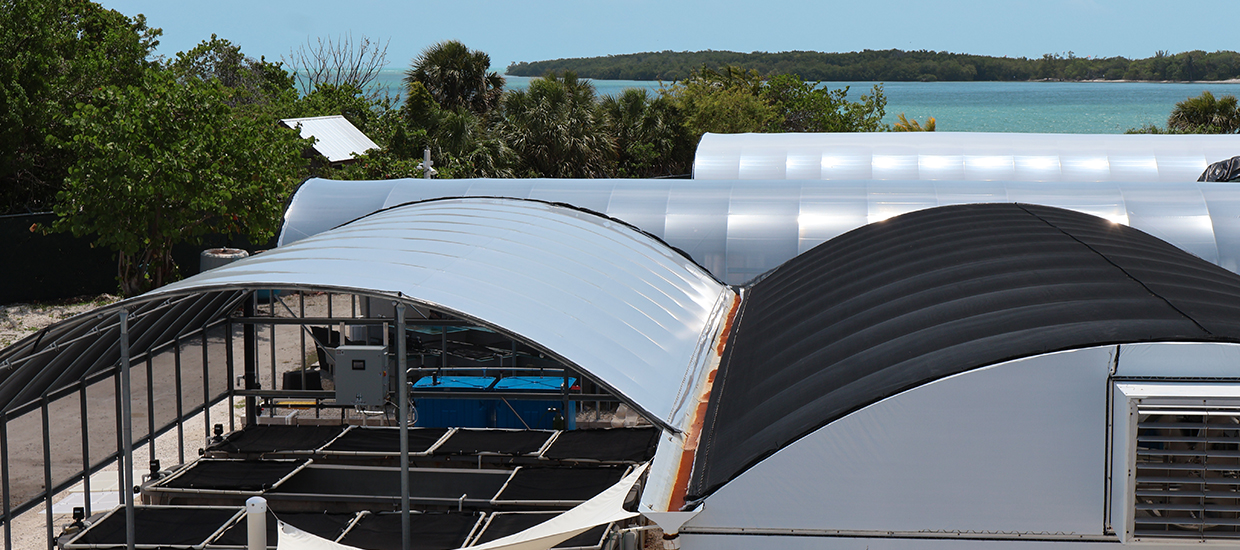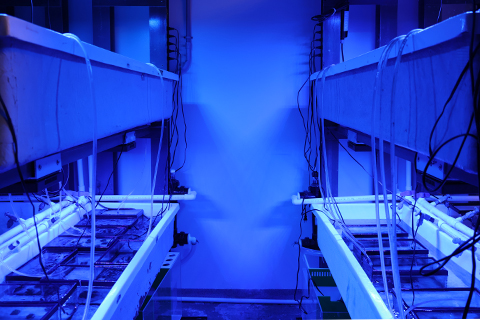Spawning Lab
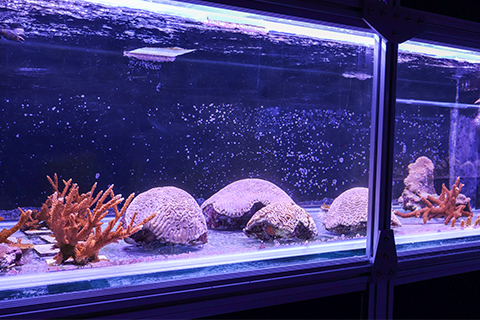
The CRFL Spawning Lab is an indoor research space with three independent 200-gallon aquarium systems designed to induce coral reproduction in captivity via the recreation of environmental cues (solar, lunar, temperature). One of the aquariums contains Floridian reef building coral species such as Acropora cervicornis (Staghorn Coral) and Diploria labyrinthiformis (Grooved Brain Coral). Another of the spawning tanks contains only coral from the Cayman Islands, including Dendrogyra cylindrus or Pillar Coral. The third tank contains only coral collected from Honduras. The purpose of this lab is to stimulate and coordinate land-based spawning events in these tanks by recreating lighting cues that coral reproduction is dependent on.
Water quality is monitored frequently via the testing of parameters such as temperature, salinity, calcium, alkalinity, magnesium, phosphate and other nutrient levels. The tank lights in the Spawning Lab are programmed by input of annual solar and lunar cycles, via a software that allows for creation and manipulation of seasonal schedules to mimic the intensity and wavelength of the sun and moonlight. Coral reproduce once a year via spawning, where egg and sperm gametes are released into the water column by each colony. This occurs at a different time for each coral species, yet corals of the same species are synchronised with the solar and lunar cycles and manage to coordinate spawning on the same night, at the same time, once per year! Due to the predictable nature of spawning events, coral scientists know when spawning should occur and can utilize this reproductive event to cross gametes of heat or disease resistant coral in hopes of breeding more coral with these genetic characteristics.




